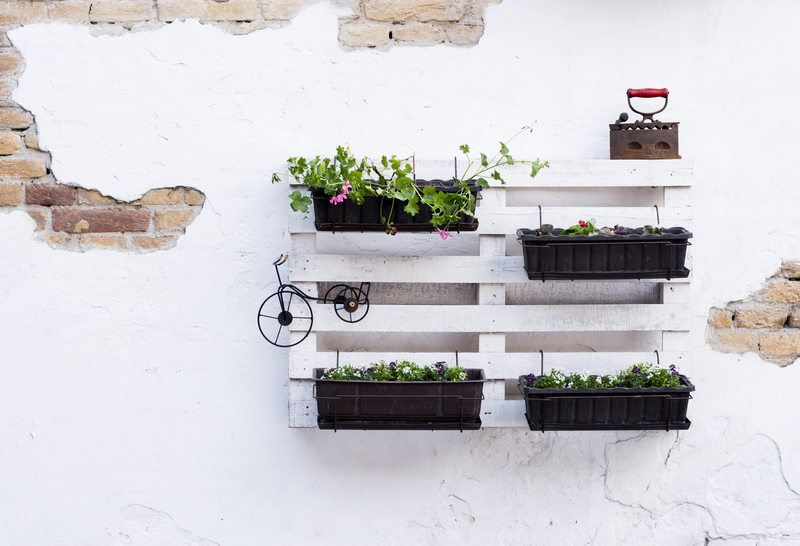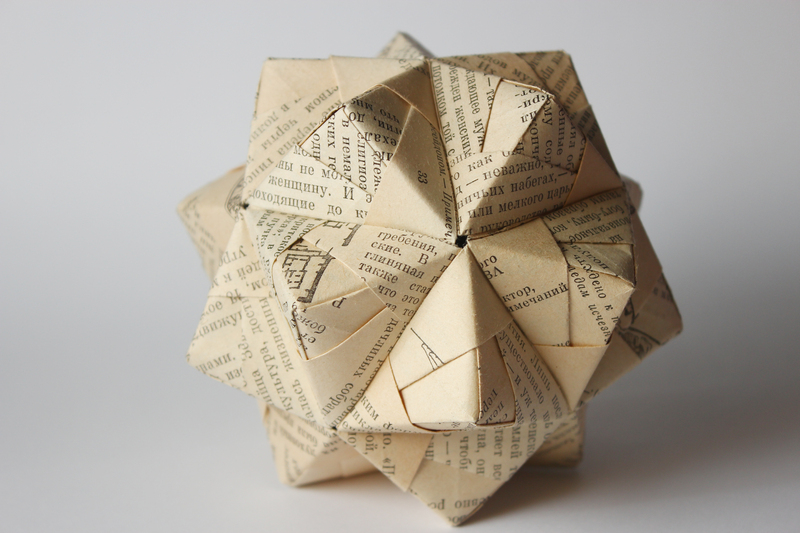Upcycle Your World: How to Turn Refuse into Personal Treasures
Are you ready to see everyday waste in a whole new light? Transforming refuse into personal treasures--also known as upcycling--empowers you to turn discarded materials into unique, functional, or decorative items. This comprehensive guide explores innovative upcycling ideas, step-by-step projects, and actionable tips to reduce waste while creating something truly one-of-a-kind.
What Is Upcycling? The Art of Repurposing Refuse
Before you begin your upcycling journey, it's important to understand what makes it so valuable. Upcycling refers to the creative process of repurposing waste or unwanted items--such as glass jars, worn-out clothing, or shipping pallets--into something new and often even better than the original. Unlike recycling, which generally breaks materials down for reuse, upcycling gives them a new function or artistic twist.
Why upcycle?
- Reduce landfill waste by reusing materials that would otherwise be thrown away.
- Create personalized treasures for your home, wardrobe, or as memorable gifts.
- Save money by crafting what you need from what you already have.
- Encourage sustainable habits that benefit the environment and community.

The Benefits of Upcycling for You and the Planet
When you turn refuse into personal treasures, you're helping create a more sustainable and eco-conscious world. Here's why upcycling is worth your while:
1. Environmental Impact
By breathing new life into old items, you prevent them from ending up in landfills. For example, upcycling old t-shirts into tote bags eliminates the need for disposable plastic bags. Every small project counts in reducing your carbon footprint.
2. Economic Benefits
Upcycling saves money. Instead of buying new containers, furniture, or gifts, you can make them yourself for next to nothing. Many people even turn their upcycled creations into successful businesses by selling them on platforms like Etsy.
3. Personal Fulfillment
Upcycling is a creative outlet that lets you express your style and values. Each project is unique and rewards you with the pride of making something special out of what others overlook.
Getting Started: How to Identify Upcycling Potential
Almost anything can be upcycled--from plastic bottles to broken furniture. As you start turning refuse into personal treasures, look for:
- Sturdy materials like glass, metal, and wood
- Unwanted items with interesting shapes or textures
- Household waste such as jars, cans, textiles, and packaging
- Discards from nature, like driftwood or pinecones
Pro Tip: When hunting for upcycling materials, think outside the box. Even chipped dishes or torn clothes can inspire your next masterpiece!
Top Upcycling Ideas: From Trash to Treasure
Need some inspiration? Here are creative ways to give new life to waste materials:
Transform Glass Jars into Home Decor
- Paint or etch old jars to make vases or lanterns.
- Organize your kitchen or office by storing small items in decorated jars.
- Fill jars with homemade mixes, candles, or bath salts for personalized gifts.
Reinvent Old Clothes
- T-shirts can become tote bags, headbands, or quilts.
- Patchwork from jeans creates stylish phone covers or wallets.
- Upcycle sweaters into cozy pillow covers or new scarves.
Furniture Makeover Magic
- Turn a worn-out dresser into a unique bathroom vanity.
- Use discarded wooden pallets to build rustic shelves or coffee tables.
- Paint, stain, or stencil rescued chairs for a custom seating area.
Creative Uses for Packaging and Plastic
- Milk cartons double as planters or birdhouses.
- Plastic bottles transform into watering cans, scoops, or vertical gardens.
- Cardboard packaging makes colorful organizers or toys for kids.
Electronics and E-Waste Innovations
- Old CDs reflect light as dazzling garden ornaments.
- Repurpose circuit boards into decorative clocks or jewelry.
- Transform computer parts into funky industrial-style art.
Step-by-Step Project: Upcycling Glass Jars
Let's walk through an easy upcycling project for beginners--turning glass jars into beautiful lanterns:
- Clean and Remove Labels: Soak jars in warm water to peel off labels and glue.
- Decorate: Paint the outside with glass paint, use stencils, or wrap with twine for a rustic look.
- Embellish: Attach glass beads, buttons, or ribbons for extra charm.
- Add Light: Place a tealight candle or string lights inside for a magical glow.
Tip: These lanterns also make lovely gifts or centerpieces for special events.
Upcycling Safety and Sustainability Tips
To keep your upcycling projects safe and eco-friendly, follow these guidelines:
- Wear gloves and goggles when handling sharp or broken materials.
- Use non-toxic paints, glues, and sealants for both your health and the planet.
- Whenever possible, source second-hand materials from local thrift stores, neighbors, or community freecycle groups.
- Dispose of any true waste responsibly--some things can't be upcycled and may require special handling (like batteries or electronics).
Turning Passion into Purpose: Upcycling as a Lifestyle
Turning refuse into personal treasures is more than just a hobby--it's a mindset shift. Here's how you can integrate upcycling into your daily life:
1. Start Small and Build Momentum
Begin with tiny projects, such as creating a pen holder from a soup can, before taking on larger furniture or fashion challenges. Each success will inspire new ideas!
2. Involve Family and Friends
Host upcycling workshops or DIY parties. Teach children sustainable habits by making crafts together from household waste.
3. Share Your Creations
Document your projects on social media to encourage others to join the upcycling movement. You might inspire neighbors to think differently about their own refuse.
Advanced Upcycling Projects for the Ambitious Crafter
- Build a pallet sofa with reclaimed wood and handmade cushions.
- Weave a rag rug from t-shirt yarn for a colorful, soft flooring solution.
- Convert old ladders into quirky bookshelves or plant stands.
- Mix-and-match ceramic dishware for unique garden edging.
- Repurpose bicycle wheels as wall art or pot racks.
Challenge yourself: Do a "zero spend" room makeover, using only repurposed, upcycled, or found materials.
Where to Find Materials for Upcycling
Looking for fresh refuse to upgrade? Try these sources:
- Thrift stores and garage sales
- Construction site discards (with permission)
- Online marketplace "free stuff" sections
- Community swap events
- Your own attic, basement, or garage
Remember: Always ask for permission before collecting items from public or private property to ensure ethical upcycling.
Getting Kids Involved: Upcycling Fun for All Ages
Upcycling isn't just for adults! Kids love crafts, and upcycled projects teach the next generation about sustainability and creativity. Try:
- Egg carton caterpillars painted with bright colors
- Plastic bottle planters for growing herbs
- Tin can wind chimes or musical shakers
- Cardboard castles or dollhouses
These projects develop motor skills, boost problem-solving, and foster eco-conscious attitudes in a fun, memorable way.
Upcycle and Give Back: Community Impact
Many upcyclers donate their creations to charitable causes or teach workshops in schools, libraries, and community centers. By turning refuse into personal treasures, you can support:
- Local homeless shelters (warm hats, blankets)
- Animal rescues (toys from old fabric or ropes)
- Fundraising events (upcycled art or decor for auctions)
Every piece you make or teach adds value beyond your home--it creates a positive ripple throughout your community.

Frequently Asked Questions about Upcycling
What's the difference between upcycling and recycling?
Recycling breaks materials down for reuse, often losing quality (like paper fibers). Upcycling transforms waste directly into something useful or beautiful--usually retaining more of the original item's strength and character.
Is upcycling expensive?
Most upcycling projects cost very little, since you use what you already have or find. Occasionally, you may need to purchase supplies like paint, glue, or hardware, but the overall expense is far less than buying new items.
Can I sell my upcycled creations?
Absolutely! Many artisans build thriving businesses selling upcycled personal treasures online and at craft fairs. Unique handmade items are in high demand as consumers seek sustainable alternatives.
Conclusion: Your Journey to a More Creative, Sustainable Life
Learning to upcycle your world is a fun, impactful way to care for the planet and express yourself. By turning refuse into personal treasures, you:
- Discover hidden value in what others discard
- Save money and encourage environmentally-friendly habits
- Create art, gifts, and household items with a story behind them
- Inspire others to look at waste in a brand new way
So why not dive into upcycling today? Gather some materials, spark your creativity, and start transforming your everyday garbage into your next beloved conversation piece. Your world will never look the same again--and neither will your landfill!
Start turning refuse into personal treasures, and upcycle your world--one project at a time.
